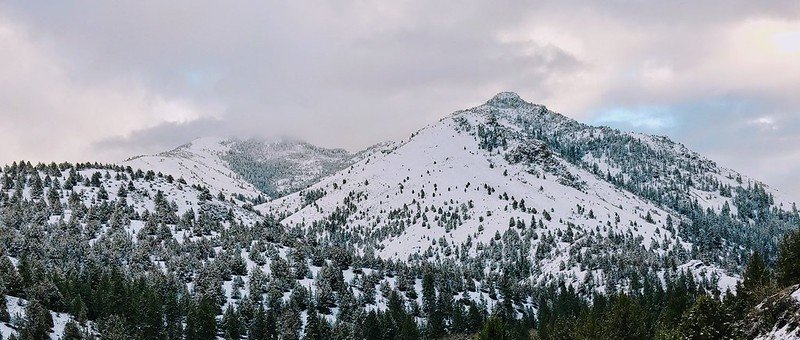Feb. 2022 Science Corner | “Ranking Forest Effects on Snow Storage: A Decision Tool for Forest Management”


Leveraging their earlier study, a team of researchers led by Blue Forest Science Advisor Dr. Susan Dickerson-Lange, has now developed a map and explanatory commentary that provides a first-glance indication of how changes in forest structure might impact snow across these landscapes.
Authors: Susan Dickerson-Lange, Julie Vano, Rolf Gersonde, and Jessica Lundquist
Interview and story by: Phil Saksa, PhD
Walking out into the forest in mid-winter, when the snow is fresh and deep, the landscape can appear fairly uniform—a gentle rolling surface of powder under the trees. Walk out into the same forest in the springtime, however, and the snowscape looks very different, with patches of still relatively deep snow next to bare ground. Why do these discrepancies exist? A few researchers have started to explore the factors that influence this difference in snowmelt, and even snow accumulation, despite a sometimes more uniform appearance back in 2013. Melt factors can include average wintertime temperature, sources of energy like direct sunlight or heat radiated by vegetation, and the structure of the forest itself—from dense stands of trees to open gaps and clearings.
We here at Blue Forest often think about how forest restoration and severe wildfires will impact snowpack—a natural reservoir for water supply during the winter that is diminishing with a warmer climate and with more precipitation falling as rain instead of snow. Leveraging their earlier study, a team of researchers led by Blue Forest Science Advisor Dr. Susan Dickerson-Lange, has now developed a map and explanatory commentary that provides a first-glance indication of how changes in forest structure might impact snow across these landscapes. Dr. Dickerson-Lange highlights that “this project benefited from several years of analysis, discussion, and debate with co-authors Jessica, Rolf, and Julie, along with natural resource managers. Given the importance of snow storage to forest health and aquatic habitat, we were inspired to develop a framework to help make sense of where forests increase versus decrease how long snow is stored on the landscape.”
But with so many microsite and microclimate conditions affecting how snow behaves in different forests, how do we know these maps are correct? Dr. Dickerson-Lange explains that “we have synthesized all we’ve learned from our own work, and that of our colleagues around the world, to make a “best guess” and map out a testable hypothesis for the entire western U.S. That being said, it’s not perfect – in fact I’m sure that more observations will elucidate where and why the predictions are off.”
Five forest-snow classes were developed to create a useful framework for researchers and practitioners wanting to better understand the phenomena in specific regions: 1) “warm and early” where higher snow accumulation results in snow lasting weeks longer in open areas than in the forest, 2) “warm and late” where snow duration is expected to be slightly longer in the open than in the forest, 3) “cold and early” where snow lasts 1-10 days longer in the forest, 4) “cold and late” where snow has been recorded to last an average of 13 days longer in the forest, and 5) “windy” where wind conditions are the dominant factor and snow persists longest within and at the edges of forests.
So how do some of our project development areas land in these forest snow classes? The Yuba Project in the Tahoe NF and the Stella and Snowy Butte Projects in the Rogue River – Siskiyou NF, are generally classified as “warm and early”, meaning reduced vegetation and the creation of gaps in the forest could lead to more snow accumulation and a longer snowpack duration. The Snoquera Project in the Mt. Baker Snoqualmie NF is also a mix of “warm and early” in the lower elevations, but transitions to “cold and late” in the upper elevations where snow would likely last longer in the forest as compared to gaps and openings. Lastly, looking at the Upper Wenatchee Pilot Project in the Okanogan-Wenatchee NF, the area is largely classified as “cold and early”, so forest thinning is not expected to have a major impact on the duration of snow storage across the landscape.
Ultimately, a subset of the current forest restoration projects Blue Forest is working on have the potential to lead to positive co-benefits for snowpack. Resources and tools like this map help us understand where to look more proactively for these benefits where they do exist. We look forward to further exploring the potential for snowpack and other water supply benefits from forest restoration with Dr. Dickerson-Lange, and appreciate the continued advice and expertise she brings to Blue Forest!